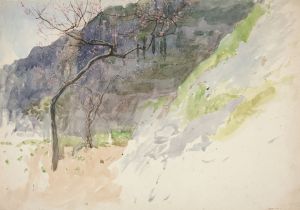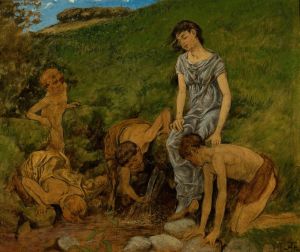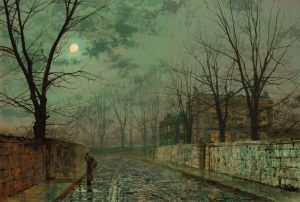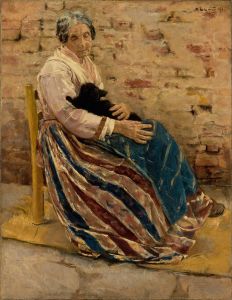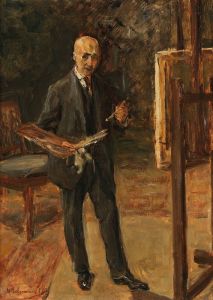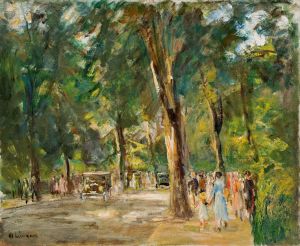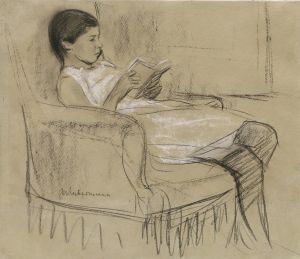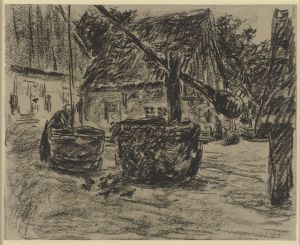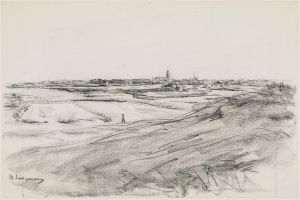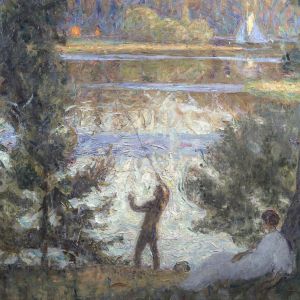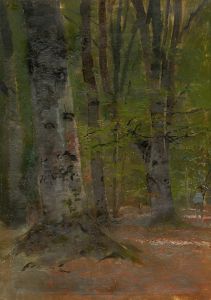
Birkenallee im Wannseegarten
A hand-painted replica of Max Liebermann’s masterpiece Birkenallee im Wannseegarten, meticulously crafted by professional artists to capture the true essence of the original. Each piece is created with museum-quality canvas and rare mineral pigments, carefully painted by experienced artists with delicate brushstrokes and rich, layered colors to perfectly recreate the texture of the original artwork. Unlike machine-printed reproductions, this hand-painted version brings the painting to life, infused with the artist’s emotions and skill in every stroke. Whether for personal collection or home decoration, it instantly elevates the artistic atmosphere of any space.
Max Liebermann's painting Birkenallee im Wannseegarten (Birch Alley in the Wannsee Garden) is a notable work by the German Impressionist painter, created during the later period of his career. Liebermann, one of the most prominent figures in German Impressionism, is well-known for his depictions of everyday life, landscapes, and scenes of leisure, often painted with a loose, light-filled style influenced by French Impressionism.
This particular painting depicts a serene birch-lined path in the garden of Liebermann's summer residence at Wannsee, a lakeside area near Berlin. Liebermann purchased the property in 1909 and spent much of his time there, especially during the warmer months. The garden became a recurring subject in his work, reflecting his deep appreciation for nature and his interest in capturing the interplay of light and shadow.
The composition of Birkenallee im Wannseegarten showcases Liebermann's mastery of perspective and his ability to create a sense of depth. The birch trees, with their slender white trunks, form a rhythmic pattern that draws the viewer's eye along the path, leading toward the background. The dappled sunlight filtering through the foliage adds a dynamic quality to the scene, emphasizing the natural beauty of the setting. Liebermann's brushwork is loose yet precise, capturing the textures of the trees, grass, and sky with remarkable sensitivity.
The Wannsee garden itself was designed with input from Liebermann, who worked with landscape architects to create a space that combined formal and naturalistic elements. The birch alley was one of the key features of the garden, and it became a favorite subject for the artist. Liebermann painted numerous views of the garden, each reflecting different times of day, seasons, and atmospheric conditions.
Today, the Liebermann Villa at Wannsee has been preserved as a museum dedicated to the artist's life and work. Visitors can explore the house, view a collection of his paintings, and walk through the restored garden, including the birch alley that inspired this painting. Birkenallee im Wannseegarten is considered an exemplary work that highlights Liebermann's ability to merge his artistic vision with his personal surroundings, creating a harmonious and evocative representation of his beloved garden.





